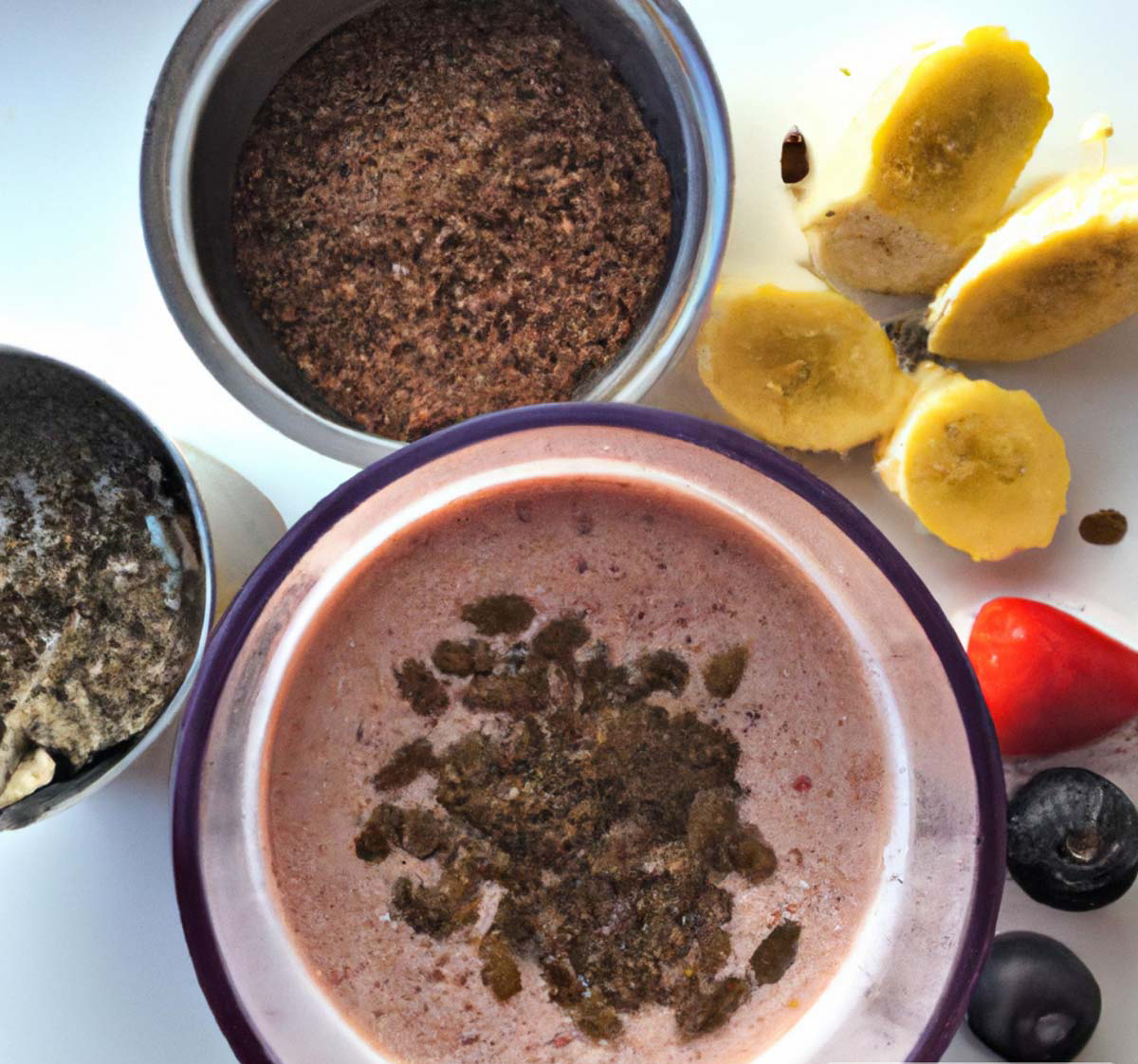As women, our hormones constantly fluctuate. These changes can affect our mood, energy levels, sleep, digestive system and more. Imbalances can show up as menstrual cramps, heavy bleeding, acne, PMS, PMDD, irregular periods, unwanted perimenopausal symptoms and more.
While there are many ways to support our hormones, one method I have found really effective is seed cycling. I see a big difference when I’m consistent with it and it’s backed up with good science. (1), (2), (3), (4). My PMS mood symptoms are much improved, as is my skin and my sleep quality.
It's a natural and holistic way to support hormonal balance in women and involves eating specific seeds during the follicular and luteal phases of the menstrual cycle to promote hormonal balance.
Important note: if you are on the pill, this protocol isn't for you. You do not ovulate so you don't have the same following build up of progesterone. You may possibly have unopposed oestrogen though because of your birth control. If you suspect your birth control might be adding to your hormonal symptoms I can highly recommend Natropathic doctor’s Lara Briden’s books (7) (btw:I don't get any endorsement from this blog).
Four seeds commonly used in seed cycling are sesame, pumpkin, sunflower, and flax. In this article, we will explore the benefits of seed cycling and provide some delicious recipes to help you incorporate these seeds into your diet
Follicular and luteal phases? What is that?!
- The follicular stage starts on day one of your period and lasts up until ovulation (often around day 14 -more on this in later).
- The luteal phase is the second half of the cycle, which begins after ovulation and lasts until the next menstrual period
So in our follicular stage, oestrogen is rising. Lots of us in the Western world have too much or too little oestrogen, or our oestrogen receptors don’t work that well. This can be problematic, that’s for sure.
Flax and pumpkin seeds help bring oestrogen levels back into balance by encouraging the right amount to be produced, while simultaneously preventing excess buildup. They are a type of phytoestrogens. Basically, if you have too much oestrogen, they can help your body eliminate it, and if you have too little they can help your body produce it. Isn’t nature just amazing!!!
In the second half of our cycles – the luteal phase - progesterone levels rise. During this phase, we can swap out the seeds to eat sunflower and flax seeds. These support progesterone production.
If our bodies can’t produce enough progesterone, that can lead to heavy bleeding, perimenopausal hot flashes, migraines, mood symptoms and more.
Top tips:
Make sure to grind the seeds into a fine 'flour' before consuming, to help our body digest them easier and ensure all the nutrients are absorbed properly. You can do this in a coffee grinder or Nutri bullet.
Seeds go rancid quickly – especially when ground. Keep them in the fridge or freezer. When buying, look for raw (not toasted), organic seeds if possible. Buying them in bulk can help to offset the cost.
What if I don’t know when I ovulate?
One of the easiest ways to know when you ovulate ( and get to know your body better) is to track your cervical mucus. https://www.verywellfamily.com/checking-cervical-mucus-to-get-pregnant-faster-1960279
You can double check with a very cheaply bought ovulation test you can get from the pharmacy.
If you have a short luteal phase – day 11 or earlier that can be a sign of low progesterone (5). This may mean you are not ovulating, which is not ideal (lots of good healthy things happen for us when we ovulate). Even more reason to seed cycle! (6)
If you have a super irregular cycle and you really can't figure it out I have seen it suggested that you follow the moon cycle instead:
New Moon to full moon = follicular phase.
Full Moon to New Moon = luteal phase.
I have no personal experience of trying this but I think there is a good chance it might regulate your cycle. Would love to hear any feedback on this.
So here’s what I do:
I need solutions that are really time efficient. So I don’t actually even make my mix into balls – I just eat a spoonful out of a glass jar I keep in the fridge.
Also:
I make my seed balls low carb/ high fat/ super high protein.
I don’t include the dates or other dried fruit lots of people make theirs with because the sugar content is too high for me. I have a spoonful in the morning and that really keeps my hunger at bay till around 11 am. Not eating carbs before 11 also helps with insulin resistance and controlling my weight (but that’s another blog!)
Simply:
- 2 x tablespoon of either flax & pumpkin OR sesame & sunflower
- Peanut butter x 2 tablespoons
- Coconut oil (amazing for inflammation) x 2 tablespoons
- Cocoa powder x 2 tablespoons
Or to your taste – experiment as you like….
However there are endless ways to incorporate the seeds into your diet, here are some ideas:
Sesame and Pumpkin Seed Granola
- 2 cups rolled oats
- 1/2 cup sesame seeds
- 1/2 cup pumpkin seeds
- 1/4 cup honey
- 1/4 cup coconut oil
- 1 tsp cinnamon
- 1/2 tsp salt
Preheat the oven to 325°F (163°C). In a large bowl, mix oats, sesame seeds, pumpkin seeds, cinnamon, and salt. In a small saucepan, melt together honey and coconut oil. Pour honey mixture over oat mixture and stir to combine. Spread mixture evenly on a baking sheet and bake for 20-25 minutes, stirring occasionally, until golden brown. Allow to cool before serving.

Sunflower and Flax Seed Smoothie
- 1 banana
- 1 cup frozen berries
- 1/2 cup plain yoghourt
- 1 tbsp sunflower seeds
- 1 tbsp ground flax seeds
- 1/2 cup almond milk
Add all ingredients to a blender and blend until smooth. Serve immediately.

Sesame and Pumpkin Seed Salad Topper
Ingredients:
- 1 tbsp sesame seeds
- 1 tbsp pumpkin seeds
- 1 tbsp olive oil
Toast the sesame and pumpkin seeds in a dry skillet over medium heat for 2-3 minutes, stirring frequently.
Toss with mixed greens with the seeds and olive oil.
Serve and enjoy!

Sunflower and flax seed energy balls:
-1 cup of pitted dates
-½ cup of sunflower seeds
-½ cup of ground flax seeds
In a food processor, blend all the ingredients together.
Roll into small balls and store in the fridge for a healthy snack.
It's important to note that seed cycling is not a substitute for medical treatment and should be used in conjunction with medical and/or professional nutritional advice. However, incorporating these nutrient-dense seeds into your diet can be a simple and tasty way to support hormonal balance. Give seed cycling a try and see if it works for you!

The personal bit!
Hormonal health is a subject very close to my heart. In my family, we have a long history of endometriosis, miscarriage, ectopic pregnancies, PMS, PMDD, thyroid issues and more. As someone who has healed themselves from PMDD, it's been a lifelong learning journey. I do my absolute best to cut the wheat from the chaff and will provide only evidenced-based information or anecdotal evidence of things I have personally experienced and work for me.
https://pubmed.ncbi.nlm.nih.gov/34338475/
(1)https://pubmed.ncbi.nlm.nih.gov/34338475/
(2)https://pubmed.ncbi.nlm.nih.gov/11907938/
(3)https://pubmed.ncbi.nlm.nih.gov/35904246/
(4)https://pubmed.ncbi.nlm.nih.gov/21889775/
(5)https://www.larabriden.com/road-map-to-progesterone/
(6)https://www.cemcor.ubc.ca/sites/default/files/uploads/6_Ovulation_and_Breast_Health.pdf
(7)Lara Briden -The Hormone Repair Manual and the Period Repair Manual
*Disclaimer - I am a Registered Holistic Therapist, trained in Massage, Aromatherapy, Reflexology and Reiki, but NOT a doctor or medical practitioner. I’m also NOT a registered Nutritionist. For personalised advice, please consult a licensed Medical Doctor, Naturopathic Doctor or nutritionist.

